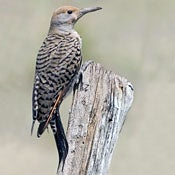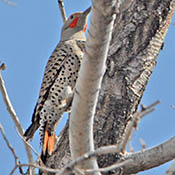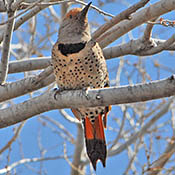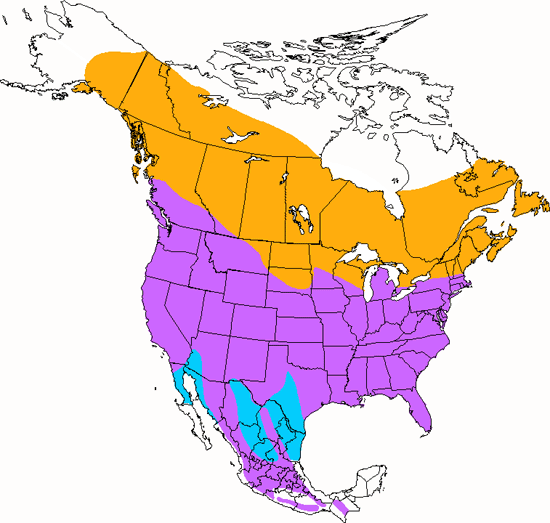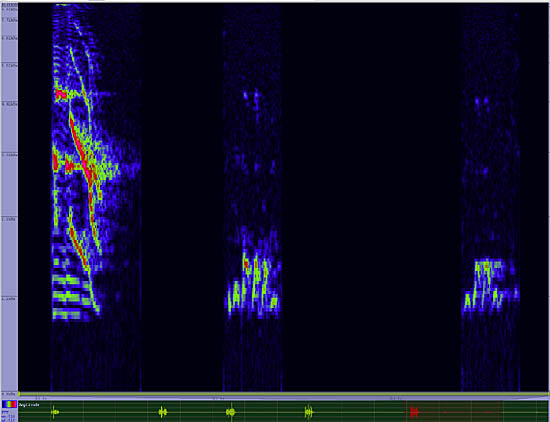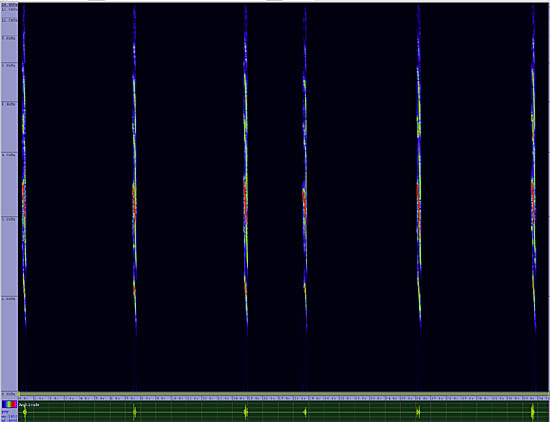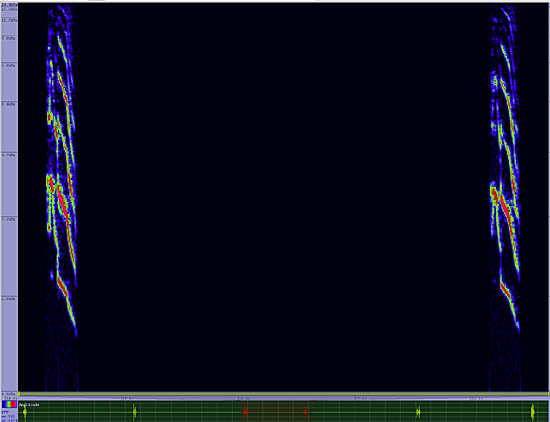
Tree Clinging
Northern Flicker
Colaptes auratus
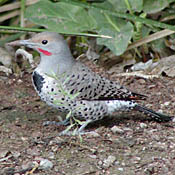
Length: 13 in. (32 cm )
This large and common woodpecker rarely uses trees for feeding like respectable woodpeckers. Instead it spends almost all its feeding time on the ground where it specializes on eating ants. During the winter, however, it will also consume nuts, grain and seeds. It is noisy and uses its long and durable bill to make loud drumming sounds on hollow branches, lampposts, and metal roofs. The Northern Flicker uses a wide range of holes and cavities in which to make its nest - including snags, telephone poles, houses, haystacks and nest boxes. They even have been known to steal river bank nest holes from kingfishers and bank swallows.
The four-digit banding code is RSFL.
Male | Barb Winterfield
Female | Brendon Grice
Male | CJ Kazilek
Female | CJ Kazilek
Fir forest
Oak-pine woodland

Ponderosa Pine Forest
Savanna

Urban city
Bird Sound Type: Buzzing
Sex of Bird: Male
Sex of Bird: Male
Sonogram Large:
There are no sonograms saved for this bird.
Sonogram Zoom:
There are no sonograms saved for this bird.
View Citation
Be Part of
Ask A Biologist
By volunteering, or simply sending us feedback on the site. Scientists, teachers, writers, illustrators, and translators are all important to the program. If you are interested in helping with the website we have a Volunteers page to get the process started.







